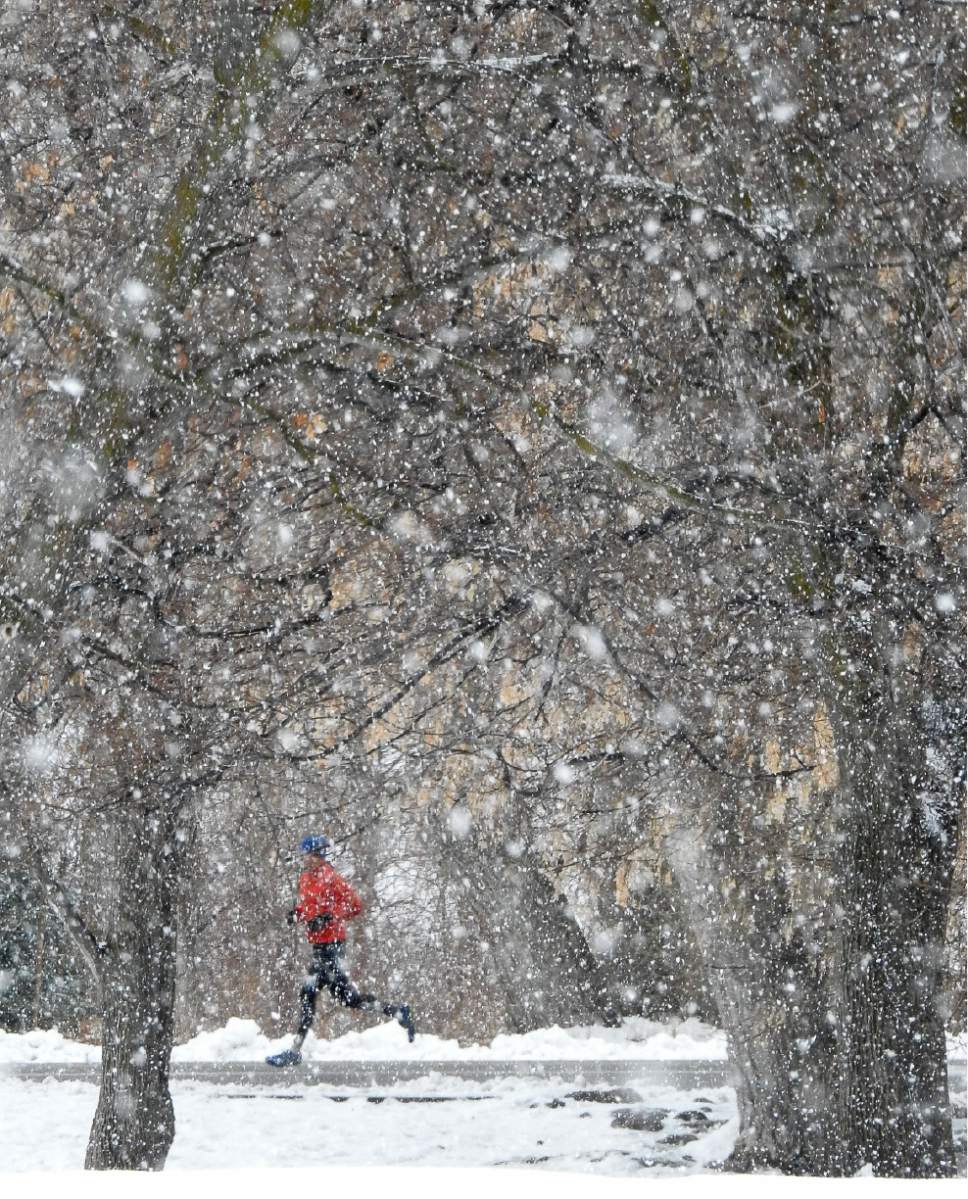This is an archived article that was published on sltrib.com in 2017, and information in the article may be outdated. It is provided only for personal research purposes and may not be reprinted.
Heavy snow storms in January could make this winter one of the wettest in recent history, but whether all that snow makes it to Utah reservoirs by summer depends on whether the cool, wet trend sticks around through spring.
Snowpack across the state is averaging 167 percent of normal, according to the February Utah Water Supply Outlook Report from the Natural Resource Conservation Service.
The driest spot in the state, the Escalante River Basin, has 132 percent of the snow it usually accumulates by this time of year and the adjacent Southwestern Basin is the wettest, at 220 percent.
The basin surrounding Salt Lake City — known as the Provo and Jordan River Basin — is at 162 percent.
Brian McInerney, a hydrologist for the National Weather Service in Salt Lake City, said that if the current pace of snow accumulations keeps up, 2017 will enter the history books alongside 2005 and 2011 — Utah's biggest snow years since monitoring with automated sensors began in the 1980s.
The U.S. Drought Monitor no longer lists any region in Utah as facing drought conditions, although the West Desert remains "abnormally dry."
But McInerney said it's still premature to celebrate a turn of fortunes for Utah, particularly after last year. Snowpack was at similar levels by this time in 2016 as well, then a prolonged dry-spell undid everything.
"Throw in the specter of climate change — our snow is melting earlier due to the warmer climate, and … that's why I'm hesitant to say that we're in great shape right now," he said.
Just how much of the current snowpack will be usable water come this summer, McInerney said, will depend largely on how long mountain temperatures remain below freezing. Warmer weather this month or next, he said, could significantly deplete those reserves.
The National Weather Service's Climate Prediction Center anticipates above-average temperatures this month. That trend is expected to continue into April in the southern portion of the state.
Twitter: @EmaPen





